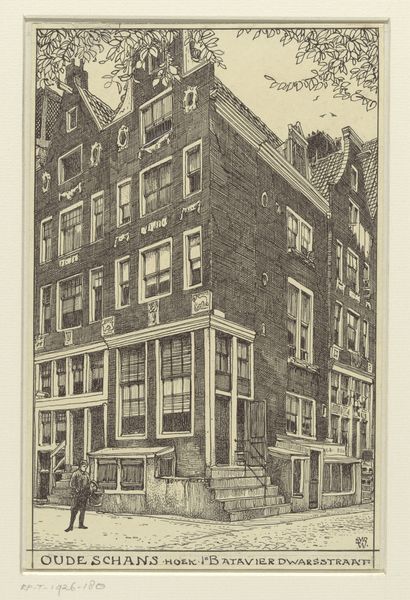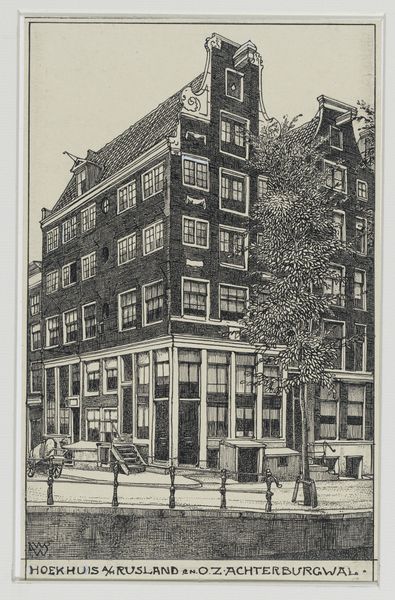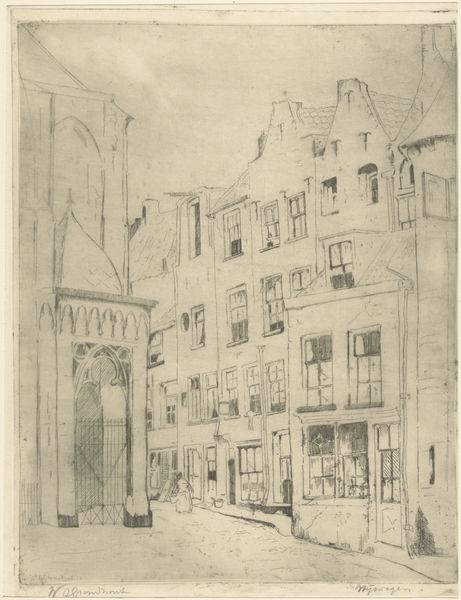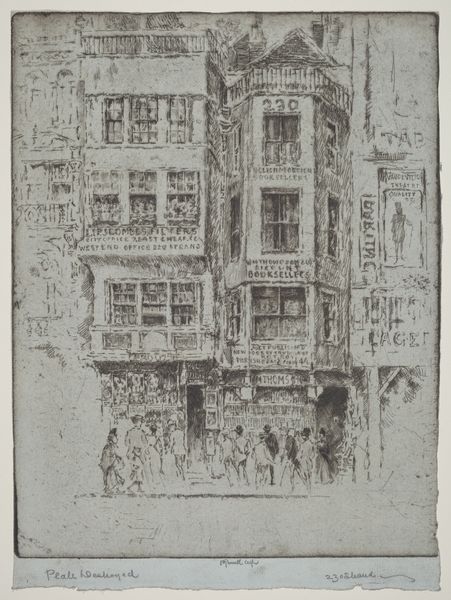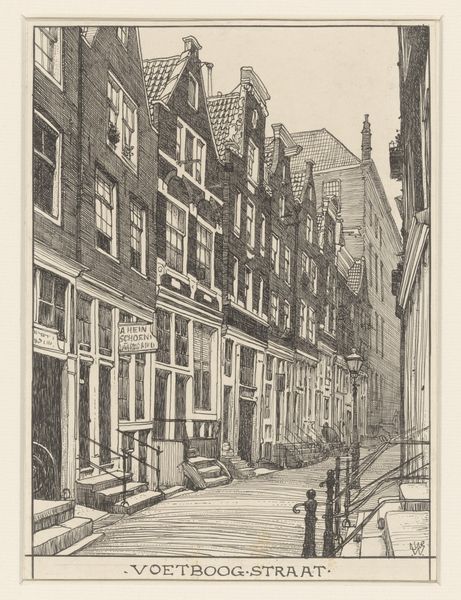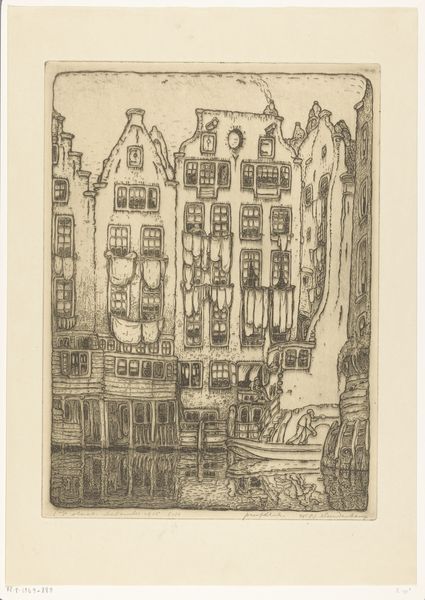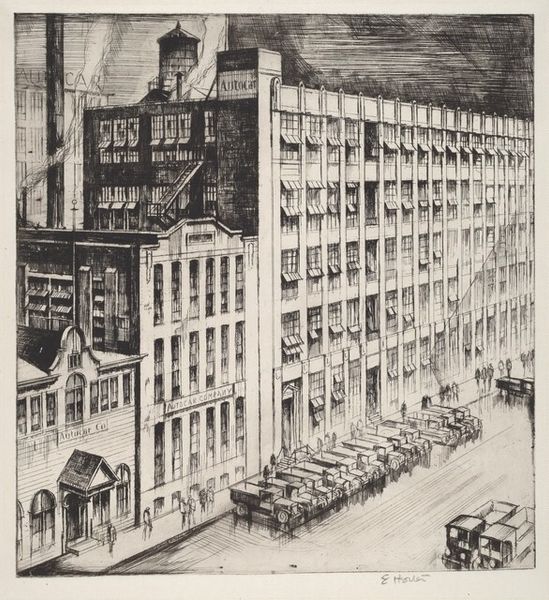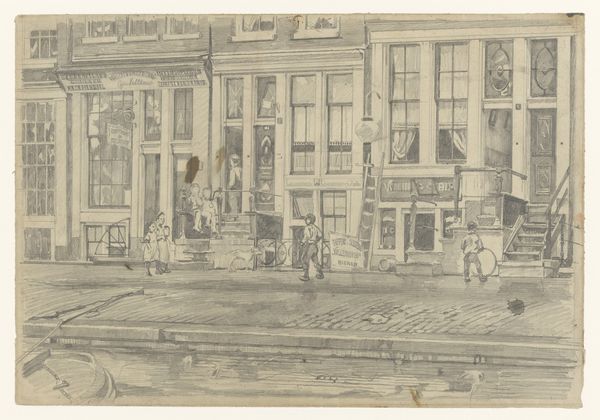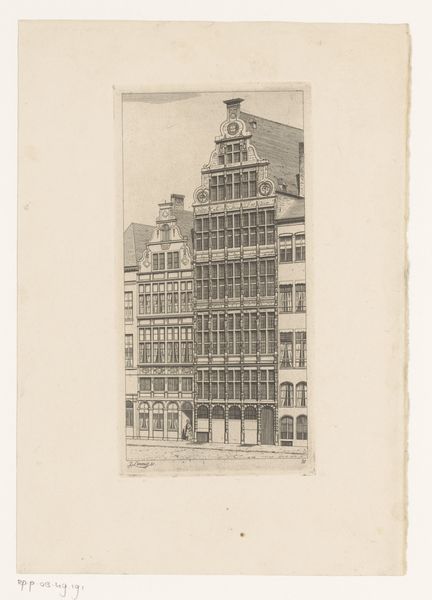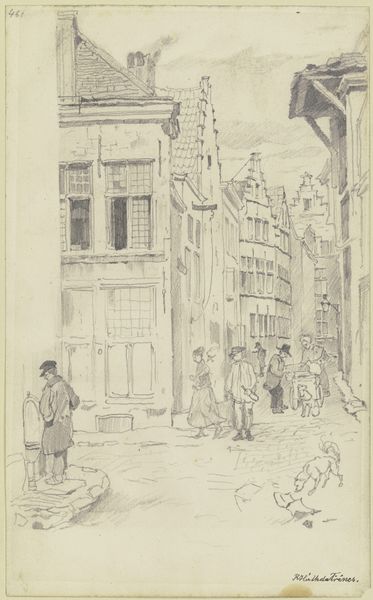
drawing, ink
#
drawing
#
dutch-golden-age
#
ink
#
cityscape
#
street
#
realism
Dimensions: height 212 mm, width 119 mm
Copyright: Rijks Museum: Open Domain
Editor: Here we have Willem Wenckebach's "Oude gevels aan de Prins Hendrik Kade te Amsterdam," a drawing done in ink between 1870 and 1926. The architectural detail is incredible! What strikes me is how the buildings seem to loom, overshadowing the figures in the street. What stands out to you in this piece? Curator: The artist's choice of ink as the primary medium emphasizes the material reality of urban development during this period. The etching process allowed for mass production, suggesting a democratization of art, bringing cityscapes to a broader audience through prints and reproductions. Editor: So you're focusing on how the piece was made rather than just what it depicts? Curator: Exactly. Look at the depiction of everyday life. The barrels, the people – these are products of a specific social and economic structure. The drawing isn't just a neutral observation; it's a record of labor, consumption, and urban infrastructure. Consider the labor involved in the trades and commerce displayed by each building facade. Editor: That's interesting; I was focused on the artistry and mood. Now I see it almost as a visual inventory of the city’s industry! It really places emphasis on the conditions of its production and the consumption of those products within a complex economic system. Curator: Precisely. It encourages us to move beyond just aesthetics and really look into what makes urban spaces – what systems and hands they’re created by. Editor: Well, I'll definitely look at cityscapes with new eyes from now on. It highlights how closely intertwined art, production, and social life truly are. Thanks!
Comments
No comments
Be the first to comment and join the conversation on the ultimate creative platform.

